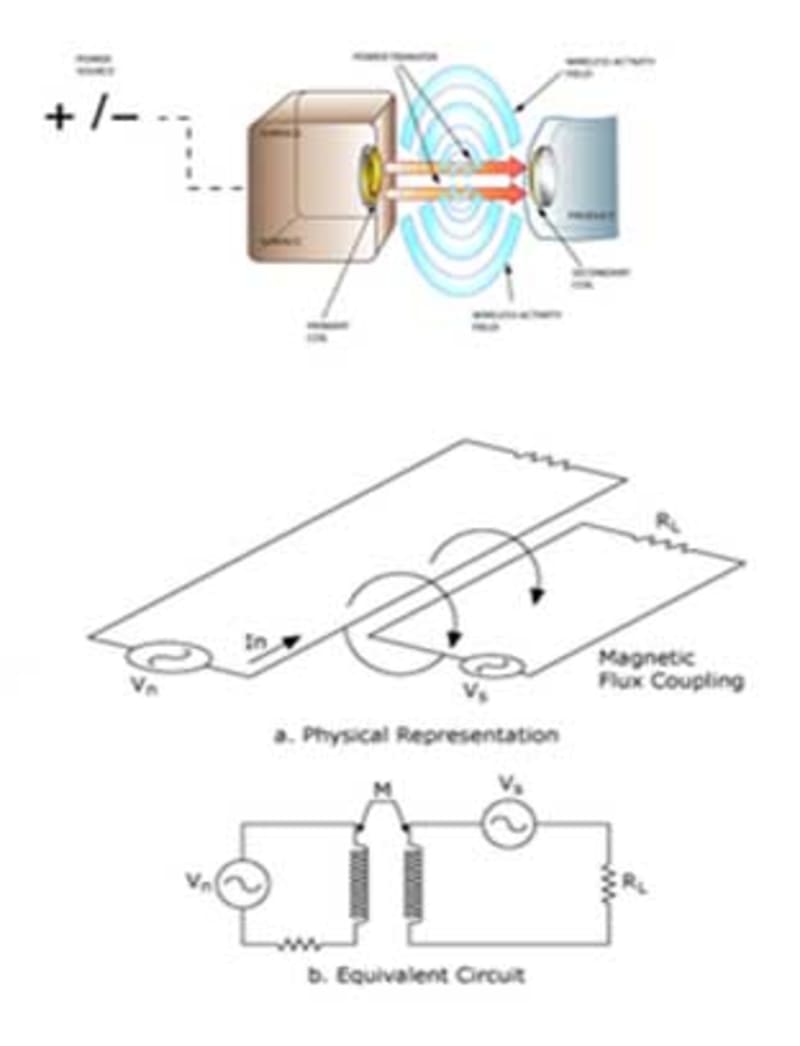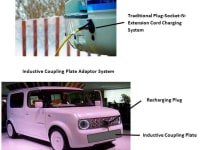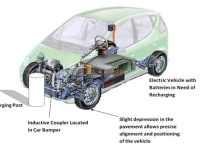It has been shown that "plug-in" recharging of electric vehicles is likely to be a relatively short lived method transferring energy from a charging base station to the vehicle (See Reference). A much better solution is to use Inductive Coupling to recharge the vehicle each time that it parks. Inductive Coupling Technology (ICT) can be used to transfer wireless power from one surface to any ICT compatible device, eliminating the need for power cords and battery chargers. With the ICT technology, there are no on or off switches. It is possible to design the system to operate automatically and intelligently. When an ICT enabled area of the vehicle comes into contact with the ICT charging zone, the technology recognizes the product, interprets its power needs and immediately begins to transfer energy.
A problem arises on how to re-charge an electric vehicle that is only equipped with a plug, when the charging station consists of an inductive charging post. The present innovation is an inexpensive method to adapt a plug-in vehicle so that it can be recharged by an inductive charging post.
The Inductive Coupling Plate (ICP) is fixed to the front bumper and the plug is inserted into the recharging socket. The circuitry encased within the coupling plate is shown in the diagram.
There are many benefits to the proposed system:
• The vehicle can be recharged using the original "plug-in" recharging socket, or using the ICP. This gives maximum flexibility to the operator
• The ICP can be rapidly mounted and removed as required
• Efficient: The ICP transfers power from the charging station with a rate greater than 90% efficiency, making it comparable to traditional hard wired charging.
• When the ICP is used, operation is safe: There are no exposed cords or contacts between charging post and the ICP
• Use of the ICP eliminates the need for corded chargers and adaptors. Allows vehicles charged wherever they are parked, on the jobsite or at home.
• The system does not affect the ability of the vehicle to be charged using the traditional plug and extension cord.
Reference: http://contest.techbriefs.com/component/content/article/865
Like this entry?
-
About the Entrant
- Name:Paul Tinari
- Type of entry:individual
- Software used for this entry:Solid Works
- Patent status:none








